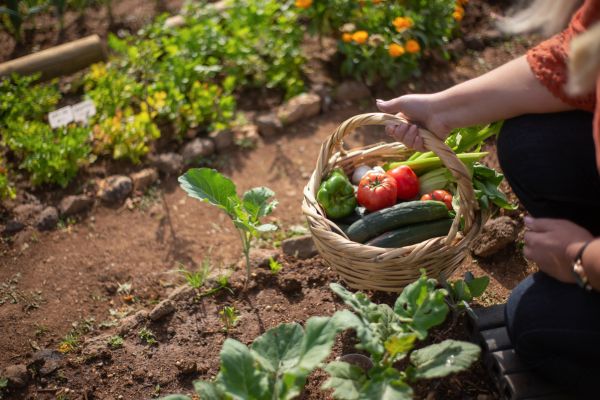Your cart is currently empty!

05 Jul Starting A Garden: A Step-By-Step Guide For Beginners
Gardening is a rewarding and fulfilling hobby that allows you to connect with nature, beautify your surroundings, and enjoy the fruits of your labour. If you are new to gardening and eager to create your green oasis, this step-by-step guide will help you navigate the process from start to finish. From selecting a location and preparing the soil to choosing the right plants and providing proper care, let’s dive into the world of gardening and get you started on your green thumb journey.
Step 1: Selecting A Location
The first step in starting a garden is choosing the right location. Consider the following factors when selecting a spot for your garden:
1. Sunlight: Most plants require at least six hours of direct sunlight each day. Observe the sun patterns in your yard to identify areas with adequate sunlight. Keep in mind that different plants have different sunlight requirements, so choose a location that suits the needs of the plants you intend to grow.
2. Accessibility: Select a location that is easily accessible for maintenance tasks such as watering, weeding, and harvesting. A garden near your house or with a nearby water source can save you time and effort.
3. Soil Drainage: Ensure that the chosen area has good soil drainage. Avoid low-lying areas that tend to collect water, as excessive moisture can lead to root rot and other plant diseases.
Step 2: Preparing The Soil
Healthy soil is the foundation for a thriving garden. Follow these steps to prepare the soil for planting:
1. Clear The Area: Remove any grass, weeds, or debris from the chosen gardening area. Use a shovel or garden hoe to loosen the soil.
2. Test The Soil: Conduct a soil test to determine its pH level and nutrient composition. Testing kits are available at garden centres or can be done through a local agricultural extension service. Adjust the pH and add organic matter, such as compost or aged manure, to improve soil fertility.
3. Till The Soil: Use a garden tiller or a digging fork to loosen the soil and incorporate organic matter. This helps improve soil structure and promotes root development.
4. Level The Soil: Rake the soil to create a smooth and level surface for planting.
Step 3: Choosing Plants
Selecting the right plants is crucial for a successful garden. Consider the following factors when choosing plants:
1. Climate And Hardiness Zone: Determine your plant hardiness zone to understand which plants are suitable for your region. This information can be found through online resources or by consulting with local garden centres.
2. Sunlight Requirements: Choose plants that match the amount of sunlight your garden receives. Full-sun plants require at least six hours of direct sunlight per day while shade-loving plants thrive in areas with limited sunlight.
3. Watering Needs: Consider the water requirements of the plants you choose. Some plants prefer moist soil, while others are more drought-tolerant. Align your plant choices with your watering capabilities.
4. Plant Size And Spacing: Take into account the mature size of the plants and their spacing requirements. Proper spacing ensures adequate airflow and minimizes competition for nutrients.
Step 4: Planting And Caring For Your Garden
Now that you have selected your plants, it’s time to plant and care for your garden. Follow these essential tips:
1. Dig Planting Holes: Dig holes that are slightly wider and deeper than the plant’s root ball. Place the plants in the holes and backfill with soil, gently firming the soil around the roots.
2. Watering: Proper watering is essential for plant growth. Water newly planted seedlings thoroughly and provide regular watering to establish healthy root systems. Watering deeply and less frequently promotes deeper root growth and minimizes water wastage.
3. Mulching: Apply a layer of organic mulch around your plants to help retain moisture, suppress weeds, and regulate soil temperature. Mulch also adds organic matter to the soil as it decomposes.
4. Weeding: Regularly remove weeds from your garden to prevent them from competing with your plants for nutrients, water, and sunlight.
5. Fertilizing: Depending on the nutrient requirements of your plants, apply a balanced fertilizer or organic compost to provide essential nutrients. Follow the recommended application rates and schedules for optimal plant growth.
6. Pest And Disease Management: Monitor your garden regularly for pests and diseases. Identify and address any issues promptly using organic pest control methods or consult with local gardening experts for guidance.
Now that you know how to start your garden journey, it’s time to put it into action. Visit the Environmental Factor website to explore a wide range of gardening products.
With dedication, patience, and a love for nature, you can transform a patch of land into a beautiful and bountiful garden. Begin your gardening adventure today and experience the joy of nurturing life while reaping the rewards of your own flourishing garden. Purchase organic gardening products here!


